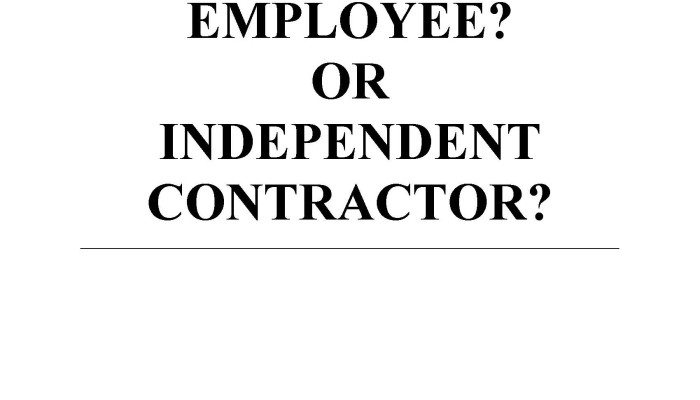Employee or Independent Contractor – How should I characterize my new hire?

When bringing on assistance for a business it is important for employers to determine whether the person should be brought on as an employee, or an independent contractor. How you characterize the relationship will have consequences in how the individual is treated from that point on by the employer, and could have unintended and adverse consequences down the road if the employer has not made a proper characterization.
Who makes the determination?
In the first instance, it is the employer who determines the characterization as to whether the person is treated as an employee or independent contractor, often through an employment agreement or independent contractor services agreement. But (and there is always a but), this initial characterization isn’t definitive, nor is the fact that the individual signs one type of agreement or the other.
Why does it matter?
The initial characterization by an employer matters because:
- The status of the characterization may be challenged by Canada Revenue Agency (CRA) or through the courts or administrative tribunal. This challenge can be triggered as the result of, for example, a hire that is treated by an employer as an independent contractor (with agreement of the hire), later claiming EI after being terminated. The hire could also bring a claim against the employer for severance, or go to CRA with a complaint, even if they agreed with the employer to be treated as an independent contractor. Such challenges can trigger Service Canada, the CRA, or Courts/Tribunals to do an analysis.
- If the employer has treated the hire as an independent contractor, there is a risk of an adverse ruling from CRA or Courts/Tribunals that determine the hire is actually an employee. If this happens, the employer will be on the hook for any unpaid remittances and taxes, and penalties (which are mandatory) will be assessed by CRA against the employer. The employer could also be subject to a higher termination (severance) claim.
- It is important for employers to get it right, and to understand the risks and consequences of an unfavourable ruling.
How to determine the proper characterization of employee versus independent contractor?
The Employment Standards Act (the “Act”) and CRA guidance is of limited assistance for this characterization. The characterization of employee versus independent contractor has developed though through case law (common law), and the courts/tribunals have developed “tests” which can assist with this determination. The Government of BC Employment Standards Branch provides an employee vs independent contractor fact sheet which has a summary of the factors used in these tests.
The starting point for an employer though should be to first ask: is what I want in the best interests of my business? An employer (or hire) may wish to use one characterization or another, for a multitude of reasons, BUT, is that characterization going to be in your business’ best interests?
Ultimately, if there is an analysis/assessment of the relationship, the decision-maker is trying to determine — looking at the total relationship between the parties, what is the proper characterization. A well drafted contract can be helpful to show the intention of the parties, but is not definitive. Just because an employer calls someone an independent contractor and has them sign a services agreement, does not make them one at law.
What is the difference between an employee versus independent contractor?
If the person is an employee at law:
- the employer is statutorily obligated to withhold … payroll contributions;
- there are limited expense deductions;
- employees can claim EI
- covered by Worksafe BC if registered
- Employment Standards Act applies
If the person is an independent contractor at law:
- the employer is not required to withhold
- contractor is obligated to remit
- there are more deductions available for the contractor
- contractor is not necessarily covered by employer Worksafe BC policy or employer’s insurance
————————————–
DISCLAIMER: The articles and information provided by JarvisLegal are general legal guidance or information only and not legal advice of any nature and should not be relied upon in any manner. By reading or sharing the information, there is no lawyer-client or other relationship created. If you wish to receive legal advice or assistance from JarvisLegal, please contact us today to find out how we can assist you, your business, or your organization.
